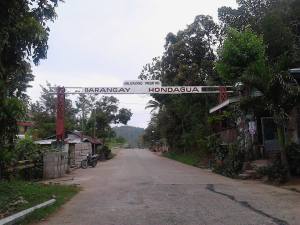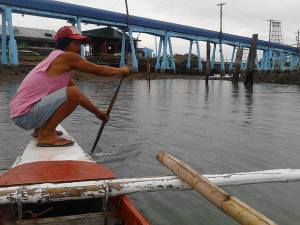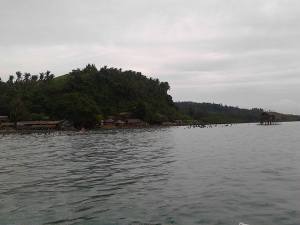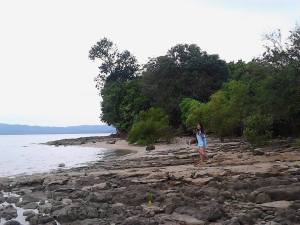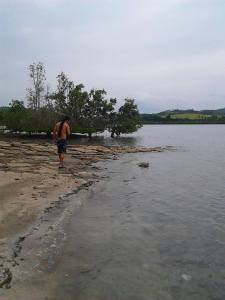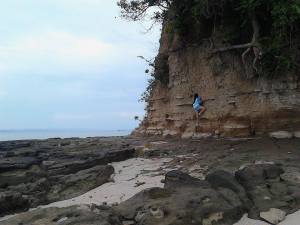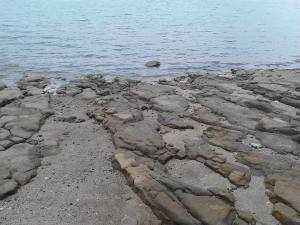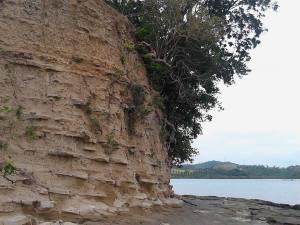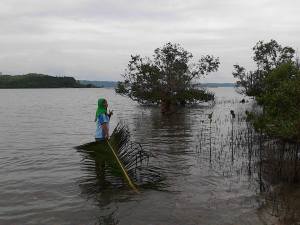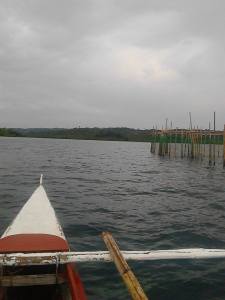***Erratum: It was brought to my attention that Pulong Niyugan is part of Hondagua and not Lopez. This was commented on by the locals at the end of this post. I sincerely apologize if I was not able to research on this further. According to the Quezon’s Local Government Page, Hondagua is part of Lopez and this was what I believed in up until it was corrected. Thank you for the feedback, I appreciate it sincerely. I hope no one would get offended further as this was an honest mistake, –something that someone who’s not a local, and is looking from a tourist’s point of view, would not know (I cannot change the title of this blog as well, as the URL of the blog is dependent on the title. If I do this, all links will render futile. I hope you guys understand.)
Even research could not provide this information as it is an internal dispute as stated from the words of Maymiskem on the comments:
“For so long, my barangay has never been transformed into a town and we were living under the shadow of Lopez. But my barangay, from 1960s brings more than 50% income to Lopez, and that maybe the reason why we were not allowed to be a town.”
Thank you, whole-heartedly. For me, these are opportunities to learn more. Thank you!!! ^___^
—with so much love, Janni
It all started 2 years ago, when I first visited Lopez, Quezon. According to my partner, growing up on that province is as typical as it can get…and…of course, I needed to prove that otherwise. There are no dull places in the Philippines. There’s always a beach to build sandcastles to, a mountain to climb, falls to rappel on, and a cave to discover.
I started researching through the world wide web. It even came to a desperate point of plotting using Google Maps! In the end, I came up with this interesting town name, Barangay Hondagua.
It took me 2 attempts to reach the place, the interval was a year or so. Whenever we would try asking the locals in the capital, they would say the town’s not really familiar. Hmm…a bit odd, right? This is the same reason why I itched relentlessly to look for the place. My very own treasure hunt!
While Typhoon Chedeng was threatening the Quezon Province, we were on a bus ride crafting our plan. The objective was to not ask just any local, but the older ones–those who have been residing in the place for a very long time. The plan was a success. We found a local fisherman who gave us directions to the paradise.
The first step to getting there was to ride the tricycle to Barangay Hondagua. The terminal for this route is situated at the back of the market, familiarly known as the “Bagong Palengke“. The trike is for sharing and once it’s filled, you’re good to go. The ride is around 30 minutes wherein you will be passing steep roads and a nice view of treetops that would make you wonder if there is really a beach nearby.
Ask the tricycle driver to bring you to the port, and once there, you can rent a small fishing boat to bring you to the island. Turns out, Barangay Hondagua was just a jump off point! The ride to the island is fairly fast. Kuya Tet, our bangkero, showed us the beaches that most locals go to before we got to our destination. According to him, we were off to Pulong Niyugan. This place is not as famous as the common beaches around but it’s a beautiful place with epic rock formations, sandbars, and tons of shells and corals.
We got there thinking we’ve heard it all. There were several people at the front of the beach so we decided to explore the island first before joining them. We walked to the opposite side of the island, and lo and behold, a sight that makes travelling worth the exhaustion and fatigue.
Mangroves, rocks, deep teal waters, white sand… it was every beach-goers’ dream! It was undisturbed, secluded even from your thoughts of the city. The silence was loud enough to amplify nature’s song of monkeys and parrots. It was to a point, frightening because the peace envelopes you that you would not want to go back.
There were day cottages around, crafted by the locals so they can spend time relaxing on the island. Should you wish to bring food, or mag-ihaw, by all means, you can do so. Just remember, CLEAN AS YOU GO!!! It’s very unfortunate that there are some people who leave their trash behind and carve their names on the stone formations. This makes me angry.
I went batshit crazy hunting for beautiful shells to bring back as remembrance and ended up with a handful. There were also hermit crabs that I sang to (♫ labas labas umang ♫ — my mom taught me this when I was a kid ☺) and played with while my partner headed for a swim.
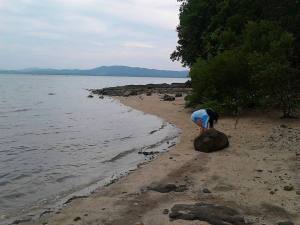
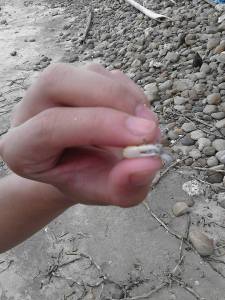
At this point, I knew the typhoon was too chicken to come. Quezon may be every storm’s favorite target but this just shows how resilient the people here are. No tempest too savage!!!
We decided to leave early and take on Kuya Tet’s kind offer of showing us around. We went to Pulong Ulong Pato, believing all the while that it was just 1 island that looked like a duck’s head and beak. Turns out, it was made up of 2 islands next to each other. There are some residents on the “beak part” of the island, and believe it or not, they have electricity.
The next island we headed off to was Pulong Barko. Unlike the previous island, this one is deserted. What’s amazing about this isle is that if you’re not from around the place, you can easily mistake it as a real cargo ship from a distance. Just a thought, actually.
We went past the fishing posts the communities leave in the middle of the ocean. The place is very abundant in marine life and the local government is extremely vigilant to excessive fishing. They have strong laws against dynamite fishing and the locals equally and honestly follows this. According to Kuya Tet, this is their main source of living and something they cannot do without. There is no point in abusing it.
There were also sea urchins around and my stomach craved for Uni Sashimi that instant. Suprisingly, the locals didn’t know they’re edible. They avoided it, as a matter of fact.
We plan to go back this July 4th for the Fishing Festival where bangkeros will compete for the fastest boat title. Or probably, we can go back in June for the Butanding’s annual scheduled visit. The locals mentioned that this brings them good fortune as the whale shark brings in thousands of smaller fishes, that they promise not to harm it and leave it be. I sincerely can’t wait!
As we were heading home, I kept on thinking whether or not to make this blog entry. The islands near Barangay Hondagua were all beautiful and far from careless and irresponsible tourism. I know that my blog isn’t that influential and wouldn’t bring as much traffic on the place however, exposing the virgin islands proposes a risk of having it discovered and eventually exploited. However, not writing about the place would kill me inside. The attraction is too much to selfishly own it for myself. Besides, this could be an opportunity for the Hondaguans to earn more for themselves and for the preservation of their paradise.

I leave the responsibility to the local government. Should this blog reach views to bring tourists on the place, please take control of the situation and never succumb to greed. It’s a long shot but this heaven deserves to live.




